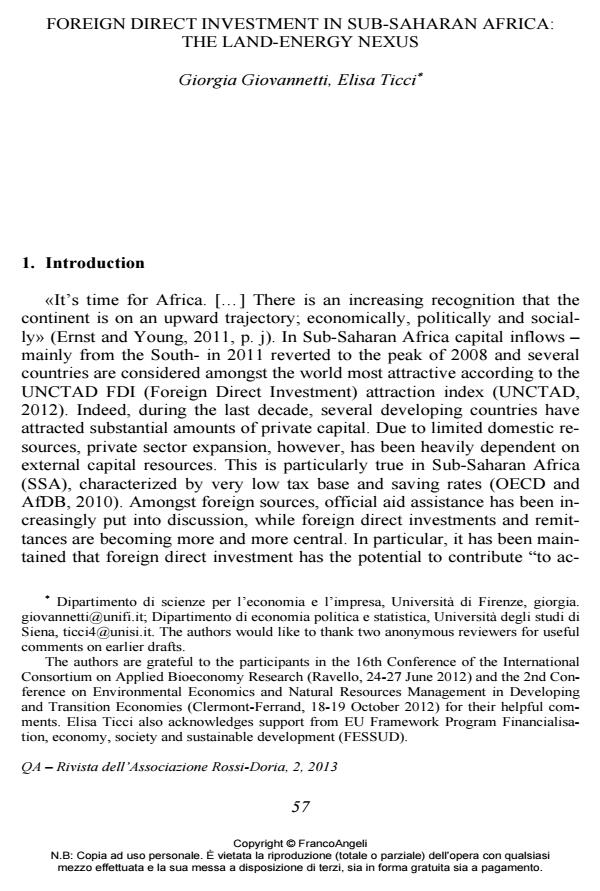Foreign direct investment in Sub-Saharan Africa: the land-energy nexus
Titolo Rivista QA Rivista dell’Associazione Rossi-Doria
Autori/Curatori Giorgia Giovannetti, Elisa Ticci
Anno di pubblicazione 2013 Fascicolo 2013/2
Lingua Italiano Numero pagine 30 P. 57-86 Dimensione file 497 KB
DOI 10.3280/QU2013-002003
Il DOI è il codice a barre della proprietà intellettuale: per saperne di più
clicca qui
Qui sotto puoi vedere in anteprima la prima pagina di questo articolo.
Se questo articolo ti interessa, lo puoi acquistare (e scaricare in formato pdf) seguendo le facili indicazioni per acquistare il download credit. Acquista Download Credits per scaricare questo Articolo in formato PDF

FrancoAngeli è membro della Publishers International Linking Association, Inc (PILA)associazione indipendente e non profit per facilitare (attraverso i servizi tecnologici implementati da CrossRef.org) l’accesso degli studiosi ai contenuti digitali nelle pubblicazioni professionali e scientifiche
L’articolo studia i recenti andamenti degli investimenti diretti all’estero per acquisizioni di terra nell’Africa Sub-Sahariana (ASS), con particolare riferimento agli investimenti per biomasse da biocarburanti e confronta le caratteristiche di questi investimenti con le tendenze generali in altri settori e continenti. L’ASS, continente ricco di terra non coltivata e a buon prezzo, attira molte acquisizioni soprattutto legate a colture per biocarburanti; ma questo crescente interesse non è privo di rischi. Le nostre stime suggeriscono che l’interesse degli investitori esteri verso acquisizioni di terra legate al settore dei biocarburanti è guidato da obiettivi di resource-seeking in quanto l’abbondanza di terra e acqua e un livello basso di governance dei diritti della terra risultano determinanti significative di questi investimenti
Parole chiave:IDE, Accaparramento di terre, Biocarburanti, Africa
- Effectiveness of EU biofuels sustainability criteria in the context of land acquisitions in Africa Stefania Bracco, in Renewable and Sustainable Energy Reviews /2015 pp.130
DOI: 10.1016/j.rser.2015.05.006
Giorgia Giovannetti, Elisa Ticci, Foreign direct investment in Sub-Saharan Africa: the land-energy nexus in "QA Rivista dell’Associazione Rossi-Doria" 2/2013, pp 57-86, DOI: 10.3280/QU2013-002003